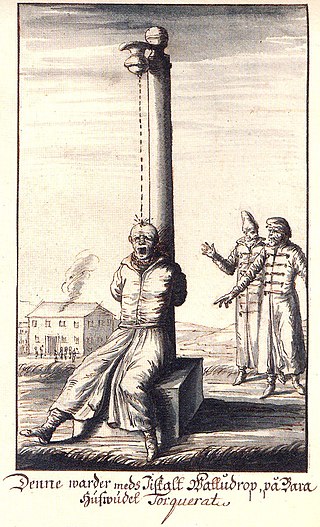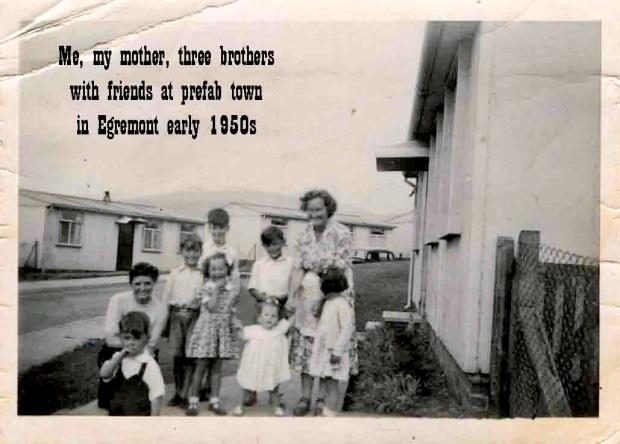There was an abandoned prefab town named ‘Little London’ at the end of Hob Hey Lane; that was where I would experience the best of my childhood, and the worst of the torture methods.
As mentioned, prefabs were temporary homes built to rehouse people who had lost their homes during the German Blitz in World War II. Our family lived in a prefab in Egremont, Cumberland for a short period around 1951 to 1952 when I was about two or three years old. During the 1950s, people gradually began to find more permanent houses and some of the prefab towns were abandoned.
I remember Little London prefab town being fairly large. My brothers and friends would cycle through the town and along cinder tracks to get to Warrington Road. Walking around the deserted prefab town felt like living through a snapshot of a forgotten past.
The town still had evidence of occupancy – old photos, old photographic plates revealing strange pictures in negative, furniture, utensils, plates, and other household items that remained in the prefabs; these allowed us to travel back in time and search for the ‘treasures’ left behind. Many of the prefab houses had had their doors broken open by time or other adventurers like us. Some may have even simply been left unlocked.
Gang Leader
We used the old prefabs for different operations. We found one prefab and made it into our gang headquarters; it became our boys’ den. Our gang consisted of five or six kids around six to eight years old led by my ten-year-old brother Alistair. To make our den comfortable, we had ransacked the other prefabs in order to furnish it with various pieces of furniture.
My elder brother, who was the gang leader, demanded that we call him ‘Z’; he said all gang leaders had a code name. We did not dare disobey him, as he was much older and stronger than us. If we questioned his dominance and strength, he would grab our hands and crunch our knuckles in his stronger hands; it was quite painful.
Sometimes, he would would apply the ‘nail torture’. He would bend one of our fingers by curling it up into a three-sided square. After, he would press on the nail to stretch the outer limits of the joint of the finger. He told me he had learnt many such ‘Chinese’ torture methods from our elder brother Stuart who possessed an ‘illegal’ book on the subject.
Chinese Torture Methods

The ‘illicit’ book had circulated amongst the boys when they were at school. So it was only a question of time before all the boys who considered themselves to be good ‘fighters’ learned all the techniques; some of those were ‘eye-gouging’, rabbit punch, throat punch, half-nelson, strangle-hold, ‘Chinese burn’, and so on. Of course, not all these are so-called ‘Chinese’ tortures, but were part of our combative itinerary. Alistair would assure us that Stuart had instructed him in many fiendish Chinese tortures, which he had learnt from the forbidden handbook that was in circulation.
We took him at his word and didn’t want to put him to the test. We obeyed all his commands and called him ‘Z’. Alistair was especially fascinated by the ‘fiendish’ Chinese ‘water torture’, and threatened to inflict such a torture on us if we didn’t obey his commands. Of course, he never applied the ‘Chinese water torture’ – but this was because it required considerable planning and apparatuses. Alistair liked to be spontaneou; .thus, his focus on various ‘hand’ and ‘wrist’ tortures.
World War II Aftermath
The Second World War was still alive in the minds of British people for at least twenty years after the war had ended (1945). This was also reflected in the way children thought and acted. Thus, the Germans (the ‘Krauts’) were ‘evil’; the Japanese (the ‘Japs’) were ‘fiendish’, devilishly ‘clever’, and loved to torture people. This was reinforced by films such as “The Bridge over the River Kwai”.
Of course, in British popular culture, such as boys’ comics and books, the ‘yellow races’ or the ‘chinks’ were all grouped together. So although the British never fought the Chinese and were even allies, in the popular British mind, they were somehow included in the ‘fiendish’ yellow races; Thus, we had that preoccupation with Chinese tortures.
Of course, superstition, myth, and prejudice have their roots in reality. Regarding the Japanese, this is evident in their treatment of British prisoners of war. As mentioned, this was shown in the film, “The Bridge Over the River Kwai”, as well as in the Manila Massacre, amongst many others. The Japanese in the Second World War, like the Russian government today (2022), were guilty of numerous war crimes – that is, the murder and torture of civilian populations.
Brother Hierarchy
I was perhaps lucky to have Alistair as the next-in-line of elder brothers in the brother hierarchy (Alistair was four years older than me, whereas, Stuart and Sandy were five and seven years older). He was more ‘bark’ than ‘bite’. Whereas, my two eldest brothers, Sandy and Stuart, were like two grey wolves; in their frequent fights, they would have perhaps killed each other had my mother or father not intervened. But Sandy was two years older than Stuart and often got the upper hand. Stuart was also over-emotional – and would ‘break down’. However, he was quick at learning fighting techniques – as from the above-mentioned illicit book of Chinese tortures.
Ironically, none of my brothers had ever attended martial arts’ courses. They didn’t need to; growing up in the North of England was school enough for them. This was a question of Darwin’s ‘survival of the strongest’. Thus, Stuart informed me one day he had learned the ‘seven points of paralysis’.
Of course, I thought this was just so much ‘bravado’ talk. But on at least two occasions, he ‘incapacitated’ me so I fell to the floor like a deflated balloon; on one occasion, he rabbit-punched my solar-plexus, and on another occasion, he exerted pressure on my tail bone causing temporary paralysis. My eldest brother almost killed me on another occasion applying a stranglehold, so I couldn’t breathe. Of course, it was not only my brothers who ‘taught’ me how to fight, but also others, but this belongs to the continuation, “Boyhood Recollections II”.
Boy Named Sue
Well, my daddy left home when I was three
Didn’t leave very much to my mom and me
Except this old guitar and an empty bottle of booze
Now, I don’t blame him ’cause he run and hid
But the meanest thing that my daddy ever did
Was before he left, he went and named me Sue.
Songwriters: Shel Silverstein; singer: Johnny Cash.
The song tells the tale of a young man’s quest for revenge on a father who abandoned him at three years of age; his only contribution to his entire life was giving him a guitar and naming him Sue, commonly a feminine name. This results in the young man suffering from ridicule and harassment by everyone he meets. Ashamed of his name, he becomes a hard-hearted nomad as a young man. He swears that he will find and kill his father for giving him “that awful name”.
Sue later locates his father at a tavern one summer day in Gatlinburg, Tennessee. He confronts him by saying, “My name is Sue! How do you do? Now you’re gonna die!” This results in a vicious brawl as the two pull their guns on each other. Sue’s father smiles with pride and admits that he is the man that named him Sue. Because Sue’s father knew that he would not be there for his son, he gave him the name as an act of tough love; he believed that the ensuing ridicule would force him to “get tough or die”. Learning this, Sue makes peace and reconciles with his father.
My Own Sue
In other words, my father didn’t name me ‘Sue’, but he gave me three elder brothers that made sure I was hardened for this world, not to mention my father’s abuses. In other words, Alistair would only inflict short and ‘mild’ tortures on me, not like my two eldest brothers who paralysed me, knocked me to the floor, or attempted to suffocate me!



